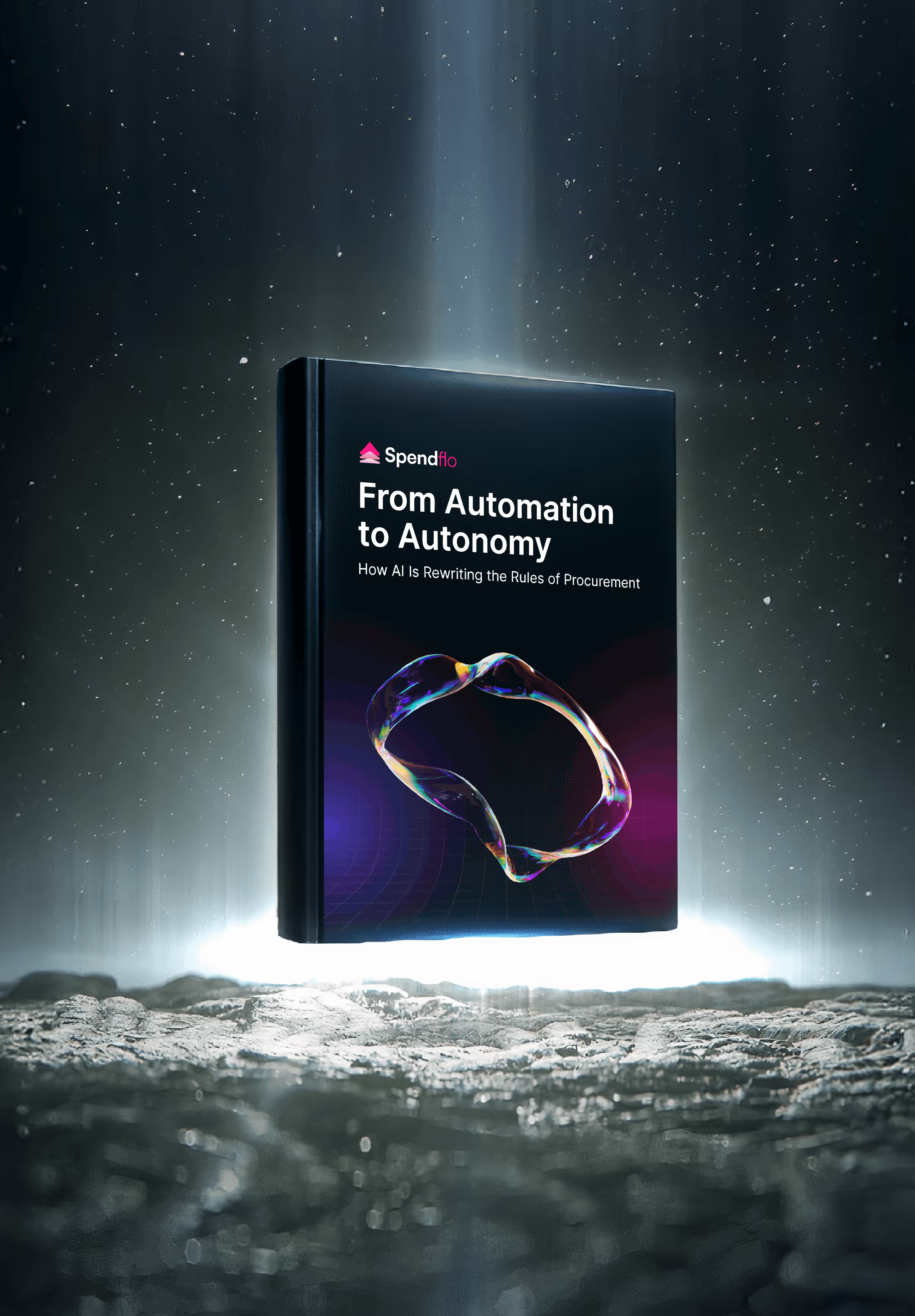

What Is AP Automation and How Does it Work?

What Is AP Automation and How Does it Work?
Unlock 7 AP automation strategies for enhanced finance efficiency. Optimize processes & drive financial success.


“AP teams spend nearly 25% of their time on manual tasks like data entry, fixing invoice errors, and responding to payment requests” (CEO World Magazine). For finance leaders, that translates to lost efficiency, higher processing costs, and delayed decision-making.
According to Business Insider, automation can accelerate invoice processing cycles by 73% and generate average annual savings of $35,000. These numbers highlight why AP automation is no longer optional; it's a critical lever for cost control and business agility.
What is AP automation?
Accounts Payable (AP) automation uses AI-powered systems to handle invoice capture, data validation, document matching, approvals, and payments. Instead of relying on manual entry and follow-ups, it creates a digital, end-to-end workflow that reduces errors, shortens cycle times, and ensures compliance.
By integrating with ERP and procurement systems, AP automation gives finance teams better visibility and control over spend. The result is lower costs, faster approvals, and stronger vendor relationships freeing teams to focus on strategy instead of routine tasks.
How Does AP Automation Work?
AP automation works by digitizing and streamlining the entire accounts payable process, from invoice receipt to payment. It eliminates manual work, improves accuracy, and accelerates approvals using a blend of intelligent technologies and digital workflows.
Let’s break down how modern AP automation tools operate behind the scenes:
1. Artificial Intelligence (AI) and Machine Learning (ML)
AI and ML power the brain of AP automation systems. They learn from historical invoice and payment data to improve classification, suggest approval routes, and flag anomalies such as duplicate payments or policy violations. Over time, these systems get smarter and more efficient.
2. Optical Character Recognition (OCR)
OCR extracts invoice data from physical or digital documents by converting images or PDFs into machine-readable text. This helps eliminate manual data entry by automatically capturing fields like vendor name, invoice number, dates, and amounts with high accuracy.
3. Robotic Process Automation (RPA)
RPA bots handle repetitive, rule-based tasks - like validating invoice line items against purchase orders (POs), routing documents for approval, and updating ERP records. This reduces errors and frees up teams to focus on exceptions or strategic tasks.
4. Digital Workflow Automation
Digital workflows route invoices through predefined approval chains based on company policies, department budgets, or invoice amounts. Approvers can view, approve, or comment on invoices from anywhere - helping speed up the payment cycle and eliminate bottlenecks.
5. Electronic Data Interchange (EDI)
EDI enables seamless, system-to-system exchange of invoices, purchase orders, and receipts between businesses and their suppliers. This ensures real-time data sharing, reduces processing delays, and improves collaboration with vendors.
6. Invoice Capture
Invoices are scanned or uploaded, and OCR with AI extracts vendor names, invoice numbers, dates, and amounts. This removes the need for manual entry and ensures higher accuracy.
7. Matching and Verification
The system validates invoices by comparing them with purchase orders and receipts. Automated rules catch duplicates, errors, or missing data before invoices move forward.
8. Approval Workflow
Invoices are routed through predefined approval chains based on policies or budget limits. Approvers can review and act from anywhere, cutting delays and bottlenecks.
9. Payment Execution
Once approved, payments are automatically scheduled through ERP or payment gateways. This ensures on-time disbursements and captures early payment discounts.
10. Reconciliation and Reporting
Automation reconciles invoices, POs, and payments in real time. Finance teams gain dashboards and reports that improve visibility, compliance, and decision-making.
Which Accounts Payable Tasks Can be Automated?
Many time-consuming and error-prone AP tasks can be automated to increase efficiency, reduce costs, and free up finance teams for more strategic work. These tasks typically involve repetitive data entry, validation, and routing.
Here are some of the most common AP tasks that can be automated:
‒ Invoice Data Capture: Automation tools use OCR and AI to extract key information from digital or scanned invoices. This eliminates manual data entry and ensures accurate data is captured instantly.
‒ Invoice Matching (3-Way and 2-Way): Invoices can be automatically matched with purchase orders (PO) and goods received notes (GRN) to ensure consistency. This helps detect mismatches and prevents overpayments.
‒ Approval Workflows: Invoices are routed through predefined digital approval chains based on amount, department, or vendor. Automated notifications and escalations ensure timely approvals without delays.
‒ Duplicate Invoice Detection: Automation tools flag duplicate invoices or payment requests using advanced logic, preventing errors and reducing fraud risks.
‒ Payment Scheduling: Approved invoices can be queued for payment automatically, based on vendor terms, cash flow availability, or early payment discount windows.
‒ Audit Trails and Record Keeping: Every action - from data capture to payment - is tracked and stored digitally, enabling real-time visibility, compliance and visibility, compliance, and easier audits.
‒ Vendor Onboarding and Data Validation: Automated workflows can verify vendor details like tax IDs, bank information, and compliance documents during onboarding, ensuring your master data is always accurate.
‒ Tax Calculations and Compliance Checks: Automation tools can validate tax calculations (e.g., VAT, GST) based on location and invoice type, reducing compliance risk and ensuring accurate reporting.
‒ Exception Handling: Instead of manual interventions, automation can flag and route exceptions (e.g., pricing mismatches, missing PO) to the right person with context, speeding up resolution.
‒ Remittance Notification: Automated systems can send remittance advice to vendors once payments are processed, improving communication and vendor trust.
‒ Cash Flow Forecasting: By analyzing invoice due dates, spend trends, and payment patterns, automation tools can help finance teams predict cash outflows and make informed decisions.
AP Automation Architecture
Accounts Payable (AP) automation works best when the underlying architecture is simple, connected, and built for scale. A strong framework not only reduces manual effort but also ensures compliance, accuracy, and faster month-end close. Let’s look at the core building blocks.
Invoice Processing Components
The foundation of AP automation starts with digital invoice capture. Instead of manually entering data, invoices are scanned or imported directly into the system. OCR (optical character recognition) and AI tools extract key details like vendor name, PO number, and payment terms.
- Automated data capture: Eliminates errors from manual entry.
- Centralized repository: Stores invoices in one place for easy access and audits.
- Status tracking: Gives finance teams visibility across every stage of processing.
Matching and Validation
Once invoices are captured, they need to be validated against purchase orders and receipts. This step ensures accuracy before approvals or payments move forward.
- 2-way/3-way matching: Invoice vs. PO and goods receipt.
- Business rule validation: Automatic checks for duplicates, missing fields, or incorrect vendor details.
- Exception handling: Flags mismatches so finance teams can resolve them quickly.
With this in place, errors are caught early, saving hours of back-and-forth between finance, procurement, and vendors.
Integration Architecture
AP automation delivers the most value when it connects seamlessly with your existing systems. The integration layer ensures that all financial data flows across ERP, procurement, and payment platforms without manual intervention.
- ERP integration: Syncs invoices, approvals, and payments with systems like NetSuite or SAP.
- Procurement workflows: Aligns invoice processing with vendor contracts and approvals.
- Payment gateways: Automates disbursements while maintaining compliance and audit trails.
This interconnected architecture ensures AP doesn’t run in silos, giving finance leaders a single source of truth for spend management.
AP ROI Analysis
Measuring the return on investment (ROI) from Accounts Payable (AP) automation goes beyond simple cost savings. A structured ROI analysis helps finance leaders justify the investment, forecast long-term value, and build a strong business case for automation.
Financial ROI Calculations
The most direct way to calculate ROI is by comparing automation costs with measurable financial gains.
- Labor cost savings: Fewer manual hours spent on data entry, approvals, and reconciliations.
- Error reduction: Lower costs from duplicate or incorrect payments.
- Discount capture: Automated approvals help you take advantage of early payment discounts.
- Processing cost per invoice: Automation can reduce costs from $10–$15 per invoice to as low as $2–$3.
Formula:
ROI = (Total Benefits – Total Costs) ÷ Total Costs × 100%
This gives a clear picture of how quickly automation can pay for itself, often within the first year of implementation.
Non-Financial ROI Benefits
Not all benefits can be expressed in dollars, but they carry long-term strategic value.
- Faster cycle times: Invoices are approved and paid in days instead of weeks.
- Improved vendor relationships: On-time payments strengthen trust and may lead to better contract terms.
- Audit readiness: Digital records make compliance checks easier and faster.
- Employee satisfaction: Teams spend less time on repetitive tasks and more on analysis and strategy.
Together, these non-financial gains support stronger governance, operational efficiency, and better decision-making benefits that compound as the business grows.
How to Automate Accounts Payable
Automating your AP process requires the right mix of strategy, tools, and change management. It’s not just about adopting software - it’s about redesigning your workflows for speed, accuracy, and scale.
Here are the key steps to automate accounts payable effectively:
1. Assess Your Current AP Process: Map out your existing AP workflow to identify pain points, bottlenecks, and manual dependencies. Understand which steps are repetitive and rule-based - these are prime candidates for automation.
2. Choose the Right AP Automation Tool: Select a platform that offers features like OCR, AI-based invoice capture, approval routing, and ERP integration. Ensure the tool supports your business size, industry needs, and existing finance systems.
3. Digitize Invoice Intake: Shift all incoming invoices - email, PDF, scanned, or EDI - into a central digital repository. Use OCR and AI to extract invoice data automatically and reduce manual errors.
4. Set Up Smart Approval Workflows: Create automated workflows based on invoice type, amount, department, or vendor. Define rules and approval hierarchies to eliminate delays and ensure compliance with internal policies.
5. Integrate with ERP or Accounting Systems: Ensure your AP automation system integrates with existing ERPs (like NetSuite, SAP, QuickBooks). This ensures real-time data sync and minimizes double entry.
6. Monitor, Optimize, and Scale: Track performance metrics like invoice processing time, approval delays, and payment accuracy. Use insights to optimize the workflow and scale automation to other finance operations.
7. Implement Role-Based Access Control: Ensure secure access by setting user roles and permissions. This protects sensitive data and helps maintain a proper approval hierarchy.
8. Leverage Machine Learning for Predictive Insights: ML can forecast invoice approval times, vendor payment patterns, or flag unusual transactions. These insights can help optimize payment timing and reduce fraud risk.
9. Automate Early Payment Discounts & Penalty Avoidance: Configure your system to track and capture early payment discounts or avoid late payment penalties automatically.
10. Create Real-Time Dashboards and Reporting: Use automation tools to build dashboards showing AP aging, pending approvals, vendor performance, and payment schedules - all in real time.
Benefits of AP Automation
When comparing AP automation with manual invoice processing, the impact is clear across cost, efficiency, and accuracy. Below is a side-by-side look at the benefits, backed by industry data.
Manual AP Challenges & How Automation Fixes Them
Manual, paper-based AP processes are slow, error-prone, and costly. As invoice volumes grow, these issues lead to late payments, compliance risks, and strained vendor relationships. AP automation directly addresses these challenges with AI-driven tools that improve accuracy, visibility, and financial outcomes.
1. Time-Consuming Data Entry
- Problem: Manual input takes hours per week and slows down processing.
- Solution: OCR and AI capture invoice data automatically with >99% accuracy, freeing teams from repetitive work.
2. Human Error
- Problem: Typos, duplications, and mismatched entries are common.
- Solution: Automated validation rules flag errors before invoices move forward, reducing rework by up to 80%.
3. Tracking Difficulties
- Problem: Paper files and emails make it hard to know invoice status.
- Solution: Centralized dashboards provide real-time visibility into every stage, from submission to payment.
4. Loss of Invoices
- Problem: Misplaced or overlooked invoices lead to missed payments.
- Solution: Digital capture stores all invoices in one secure system with audit trails.
5. Late Payments and Discount Loss
- Problem: Delayed approvals prevent on-time payments and early discount capture.
- Solution: Automated reminders and fast routing reduce approval time by 60–70%, helping capture 2–5% annual cost savings.
6. Fraud Risk
- Problem: Duplicate or fraudulent invoices slip through manual reviews.
- Solution: Role-based access, audit logs, and fraud detection rules flag irregularities and cut duplicate payments by up to 30%.
7. Poor Vendor Relationships
- Problem: Suppliers lose trust when payments are late or inconsistent.
- Solution: On-time, accurate payments build confidence and improve negotiation leverage.
8. High Cost of Scaling
- Problem: More invoices mean more staff, increasing overhead.
- Solution: AP automation scales without extra headcount, resolving common mismatches automatically and reducing manual intervention by 80%.
7 Strategies to Improve AP Automation
These are some of the most effective automation strategies to increase efficiency, strengthen compliance, and minimize errors across your AP process.
1) E-invoicing to go paperless
Replace paper invoices with secure digital formats to cut processing time and costs. E-invoicing also reduces document loss or distortion and improves data quality for downstream workflows.
2) Simplify invoice handling
Automate two- and three-way matching (PO → receipt → invoice) to eliminate manual checks. This speeds approvals and enforces policy compliance at the line-item level.
3) Digitize approvals
Use automated, role-based approval routes to remove bottlenecks and create a complete audit trail of every decision. Versioned comments and timestamps keep teams aligned with internal controls.
4) Enable vendor self-service
Give suppliers a secure portal to submit invoices, upload tax/insurance documents, and update banking details. Transparency reduces back-and-forth emails and increases trust and data accuracy.
5) Automate payment timelines
Schedule recurring payments and trigger reminders to capture early-pay discounts and avoid late fees. Exception rules flag anomalies (amount changes, bank detail edits) before funds are released.
6) Data security measures
Protect sensitive AP data with SSO/MFA, role-based access, and least-privilege permissions. Encrypt data in transit and at rest, enforce vendor bank-change verification (e.g., out-of-band checks), and maintain detailed access logs for monitoring and forensic review.
7) Compliance capabilities
Bake compliance into the workflow with policy-driven rules, retention schedules, and exportable audit trails. Map controls to regulatory frameworks (e.g., SOC/ISO, SOX) and automate evidence collection—approvals, change history, and reconciliations—so audits are faster and less error-prone.
Top 5 tools for AP automation
How to Choose AP Software
Selecting the right accounts payable software can make or break your automation journey. The ideal solution should fit your business needs today, integrate seamlessly with existing systems, and scale as you grow.
Ease of Use and User Experience
Look for an intuitive interface that finance teams and occasional approvers can use with minimal training. A clean dashboard and logical workflows encourage adoption across the business.
Automation Capabilities (OCR/AI)
The best solutions use OCR and AI to capture invoice data accurately, match POs to invoices and receipts, and detect duplicates. Advanced automation reduces manual entry and improves accuracy.
Integration Capabilities
Ensure the platform connects smoothly with ERP and accounting systems like NetSuite, SAP, Oracle, or QuickBooks. Seamless integration eliminates data silos and prevents sync errors.
Customizable Workflows
Choose a solution that adapts to your business rules approval hierarchies, dollar thresholds, and payment preferences. Flexible workflows are critical for compliance and efficient scaling.
Fraud Detection and Audit Trails
Strong platforms include built-in fraud detection rules, audit-ready logs, and role-based access controls. This safeguards against duplicate or suspicious payments and ensures transparency.
Security and Compliance Standards
Check for compliance certifications such as SOC 2 or ISO 27001, along with tax and financial regulatory adherence. Security and compliance should be non-negotiable.
Scalability and Multi-Entity Support
If you operate across multiple entities or locations, your AP solution should handle complex structures without requiring separate systems. Multi-entity support is essential for growing or global organizations.
Vendor Management
Look for vendor onboarding, tax validation, and centralized communication in one platform. A strong vendor management layer improves relationships and speeds up payment cycles.
Payment Flexibility
Your AP software should support multiple payment options ACH, wire transfers, checks, and global payments. Flexibility ensures vendors are paid on time, in their preferred method.
Visibility and Reporting
Dashboards, KPIs, and real-time analytics are vital for tracking invoice status, cycle times, and spend trends. This visibility helps finance leaders make faster, data-driven decisions.
Support and Implementation Services
Consider providers that offer white-glove onboarding, training, and responsive support. Strong implementation services make adoption smoother and deliver faster ROI.
Cost and ROI Potential
Weigh the total cost of ownership subscription fees, implementation, and support against measurable benefits like time savings, error reduction, fraud prevention, and early payment discounts.
Implementation Framework and Best Practices
Successful AP automation doesn’t just depend on the tool you choose it relies on a structured rollout. A phased approach ensures smooth adoption, minimal disruption, and measurable outcomes.
Phase 1: Planning and Assessment
- Current state process mapping: Document existing invoice workflows to identify inefficiencies and bottlenecks.
- Stakeholder alignment: Involve finance, procurement, IT, and leadership early to ensure buy-in.
- Success metrics definition: Define KPIs such as processing cost per invoice, cycle times, and error reduction targets.
- Tool selection criteria: Evaluate vendors based on scalability, integration, compliance, and ROI potential.
Phase 2: Configuration and Setup
- System configuration: Customize features like invoice capture, approval routing, and reporting.
- Workflow design: Align approval chains and exception handling with company policies.
- Integration setup: Connect to ERP, procurement, and payment systems for seamless data flow.
- Security implementation: Ensure SOC 2/ISO compliance, user access controls, and audit readiness.
Phase 3: Testing and Training
- User acceptance testing (UAT): Validate the system against real-world scenarios before rollout.
- Staff training programs: Train finance and procurement teams on new workflows and tools.
- Change management execution: Communicate benefits clearly to reduce resistance and encourage adoption.
- Pilot deployment: Launch with a small group or business unit to identify and resolve issues.
Phase 4: Go-Live and Optimization
- Full deployment: Roll out the system across the organization once validated.
- Performance monitoring: Track KPIs such as processing cost, cycle time, and error rates.
- Continuous improvement: Refine workflows and configurations based on feedback and results.
- Success measurement: Compare actual ROI against defined metrics to ensure long-term value.
Boost your AP process with Spendflo
Outdated, slow manual tasks should be a thing of the past. Forward-thinking businesses know that automating repetitive, time-consuming tasks makes their teams more productive and efficient.
Accounts payable is an excellent area in which to improve processes. AP automation systems are typically:
- Faster
- Easier to use
- Less likely to have errors
- Cheaper in the long term
- Helps prevent lost bills or paying fraudulent invoices
- Handles exceptions when invoices don't match purchase orders
- Gives real-time updates
To help you accelerate your AP automation, Spendflo can:
- Automatically import and check invoices
- Store important accounts payable (AP) documents in one place, like purchase orders and invoices
- Automatically match invoices with purchase orders
- Use workflows to get and track approvals from managers
To learn more, book your free demo to get the saving analysis!
Frequently Asked Questions on AP Automation
1. What types of businesses benefit from AP automation?
AP automation is valuable for businesses of all sizes - especially those handling high invoice volumes, multiple vendors, or decentralized teams. It’s particularly useful for finance-led startups, growing mid-sized companies, and enterprises aiming to cut costs and improve process accuracy.
2. How does AP automation improve the invoice approval process?
AP automation eliminates manual follow-ups by routing invoices through pre-set approval workflows. Stakeholders receive automatic notifications, and approvals can be completed with a single click - resulting in faster turnaround and fewer delays.
3. How does AP automation prevent duplicate payments?
Automation software detects and flags duplicate invoices using vendor details, invoice numbers, and PO references. It prevents the same invoice from being processed more than once reducing the risk of overpayment or fraud.
4. Who uses AP automation software?
Finance teams, accounts payable departments, procurement professionals, and CFOs use AP automation tools to manage invoices, track approvals, ensure compliance, and gain visibility into spend. Even business leaders and department heads benefit from automated approval access.
5. What is the top AP automation software?
Top AP automation tools include platforms like Stampli, Tipalti, Airbase, and Spendflo, depending on business size and needs. Each offers features like invoice capture, approval workflows, and ERP integration. Explore the top AP tools here.
6. How can AP automation help improve compliance and reduce fraud?
Automation ensures accurate recordkeeping, enables audit trails, and restricts unauthorized access. It flags suspicious patterns, mismatched payments, or policy violations - helping businesses stay compliant and secure against fraud.
7. Can AP automation integrate with other accounting software?
Yes. Most AP automation tools integrate with ERPs and accounting platforms like NetSuite, SAP, QuickBooks, and Oracle, enabling real-time data sync, better visibility, and seamless financial operations.
8. What is the ROI for businesses adopting AP automation?
Businesses adopting AP automation often see up to 70–80% time savings, reduced invoice processing costs, fewer late payments, and increased early payment discounts - resulting in substantial ROI within the first year.
9. Is AP automation secure?
Yes, modern AP tools use encryption, role-based access controls, and audit logs to ensure financial data is secure. Many also offer compliance with standards like SOC 2 and GDPR.
10. How much does AP automation cost?
Costs vary by provider, features, and business size. Basic plans may start at a few hundred dollars per month, while enterprise-grade solutions with full automation and integrations can cost more. ROI often outweighs initial spend.
11. What are the advantages of automating the AP system?
Key advantages include reduced manual effort, faster processing, improved accuracy, lower costs, stronger compliance, better vendor relationships, and greater spend visibility - all contributing to smoother finance operations.
12. How are invoices processed in AP automation?
Invoices are captured digitally (via OCR or email), validated against purchase orders, routed for approval, and sent for payment - all within a centralized platform. This process is faster, more accurate, and fully trackable.















.png)




.png)





.avif)





